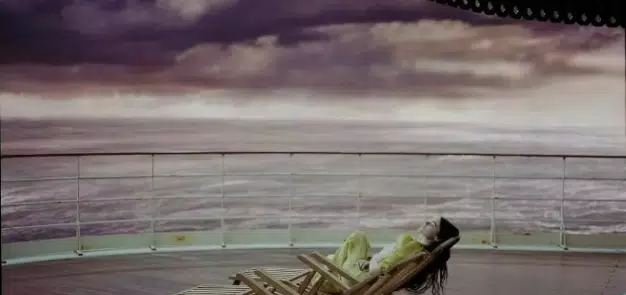The new work by German director Wim Wenders, "Perfect Days," has been nominated for the highest award at the 76th Cannes Film Festival: the Palme d'Or. I'd like to review the creative journey of this representative figure in the New German Cinema.
During the 1950s and 1960s, Germany's film industry experienced a downturn. However, a resurgence occurred in the 1960s, fuelled by the backing of the national film fund and driven by a cohort of young German filmmakers who possessed a strong innovative spirit. This movement sparked a wave of creativity, later recognized as the New German Cinema.
Influenced by the French New Wave and Hollywood movies, outstanding young filmmakers of this period were determined to break away from traditional commercial films and aspire to create a new international film language. As representatives of the peak of the German New Film Movement, Wim Wenders was joined by Werner Herzog, Rainer Werner Fassbinder, and Volker Schlöndorff, who together became known as the four major directors of the new German cinema. The styles of these directors varied greatly in their subsequent film creation careers and had their unique characteristics.

The Road Movies of Urbanites
Which one of us, in his moments of ambition, has not dreamed of the miracle of a poetic prose, musical, without rhythm and without rhyme, supple enough and rugged enough to adapt itself to the lyrical impulses of the soul, the undulations of reverie, the jibes of conscience?
—Charles Pierre Baudelaire《Le spleen de paris》
Among the four prominent figures of the new German cinema movement, Rainer Werner Fassbinder's films uniquely blend elements of entertainment with incisive social criticism. Volker Schlöndorff likes political metaphors, Werner Herzog pays more attention to grotesqueness and extremism in filmmaking, while Wim Wender 's is famous for his creation and development of road movies.
Wenders had a remarkable fascination with Hollywood's Westerns and road movies in his youth. In the 1970s, Wenders began shooting his European-style road movies, with the most famous being his Road Trilogy: "Alice in the Cities", "Wrong Move", and "Kings of the Road”.
But two of Wenders' more popular films may be "Paris, Texas" and "Wings of Desire". These two movies also have a lot of roads and themes of searching for color, while throughout the film, there are "moments of emotion" captured by Wenders' lens.

In Wenders' films, the protagonist often sets out on a journey for various reasons and is in a state of wandering. In "Alice in the Cities", the German photographer drives back and forth on American highways to find a photo report. In "The Wrong Movement", the young writer embarks on a journey to shake off nihilism and find inspiration. "Kings of the Road" is about how the projectionist Bruno Winter meets and shares a free roaming time with Robert Lander, who is in trouble, after they meet. When it comes to "Paris, Texas", the protagonist resolutely sets out on the desert road of Texas, and the film takes on a tragic hue.

This state of wandering indeed breaks the continuity of the film's narrative. However, these wanderers in the city allow the audience to appreciate people's living environment and current situation through endless journeys. At the same time, there are those moments that cannot be explained when they are encountered during loose travel or stopover contemplation. These moments are so clear and overwhelming that you hold your breath as you sit or cover your mouth with your hand. These moments in these movies are just what Benjamin described in “A Lyric Poet in the Era of High Capitalism” as chockerfahrung. It is exactly where the emotional level of Wenders' films lies.
The most eye-catching image brought about by modern life: indifference — making people no longer care about others. The development of modern industry has made "me, myself and I" and efficiency become the ultimate standards. People no longer communicate or converse. Every person only concerns whether they can move forward smoothly. The distance between hearts gradually widens.

At the same time, modern society has also created a batch of loafers. These people are infatuated with the enjoyment brought by being surrounded by people (though they are reluctant to integrate into it). Facing the fresh things presented in front of "loafers" on the road, facing the constantly emerging unexpected scene, the crowded flow and the ever-changing scenario make people unable to appreciate it carefully, but it seems incredibly beautiful. Therefore, Benjamin's concept of chockerfahrung appears, and with the development of the journey, one wave does not calm down, and another one comes up to loafers' front.
Without a doubt, Wenders' deep understanding of modern society's indifference and alienation is evident in his works. This expression of chockerfahrung is perfectly encapsulated in "Wings of Desire." The story about angels wandering through the city, listening to the inner voices of humans. These angels serve as both redeemers and witnesses to human history, facing the whispers of those who mutter or yearn day and night. War, disasters, and fleeting joy have enabled these angels to witness the moments of chockerfahrung in human history. Simultaneously, they are redeemed, realizing the reasons for humanity's existence through sacrifice, love, and service for others in the face of eternal emptiness.

Camera: A Weapon against the Destruction of Things
In addition to being associated with the theme of roads in Wenders' films, another aspect that defines his filmmaking style is his commitment to documenting reality. When he was a teenager, he picked up his first camera and shot his first movie. It was an uninterrupted visual feast composed of passers-by on the windowsill, streets, and passing cars, essentially laying the foundation for his subsequent works that tend to present things as they truly are.
Wenders views the camera as a weapon against the destruction of things, always carrying the responsibility and belief that images can faithfully document and save the existence of things. He often quotes Cézanne's words: "Everything is about to disappear. You've got to hurry up if you still want to see things."

Wenders' film style often appears broad and calm due to this observer's perspective. He uses minimal montage to constantly record movement and changes in a passive manner, including roads, trains, cars, bustling crowds, vast yet desolate natural landscapes, all of which are presented in Wenders' cinematographer's lens.
In fact, documentary films occupy a significant portion of Wenders' filmography. "Tokyo-Ga" (1985) is a search for the spiritual father of Wenders' film career, Ozu Anri, where Wenders records his journey in Ozu-style, showcasing the tranquil yet ordinary social landscape of Tokyo. "Buena Vista Social Club" (1999), a recording of passionate Latin American music that Wenders was saved by rock and roll at a young age. Other works such as 3D documentary "Pina", "Aufzeichnungen zu Kleidern und Städten" (1989) have received varying degrees of praise from audiences.
The most praised documentary by Wenders is "The Salt of the Earth" (2014). In this film, Wenders follows the footsteps of photographer Sebastião Salgado and casts a compassionate gaze upon the earth. From Kuwaiti oil fields to Rwandan genocide, from Ethiopian refugees to Yugoslavian civil war, a series of black-and-white masterpieces capturing human conflict and barbarity are presented in slow motion through the use of transparencies. Witnessing these hardships led Salgado to despair and feel that "I no longer believed in anything, in any salvation for the human species. You couldn’t survive such a thing. We didn’t deserve to live. No one deserved to live."
Nature allows Salgado to seek photography possibilities in another way: through completing the project "Genesis", he integrates self-redemption into reverence, recording, and preservation for the vast life on earth.





















































Share your thoughts!
Be the first to start the conversation.